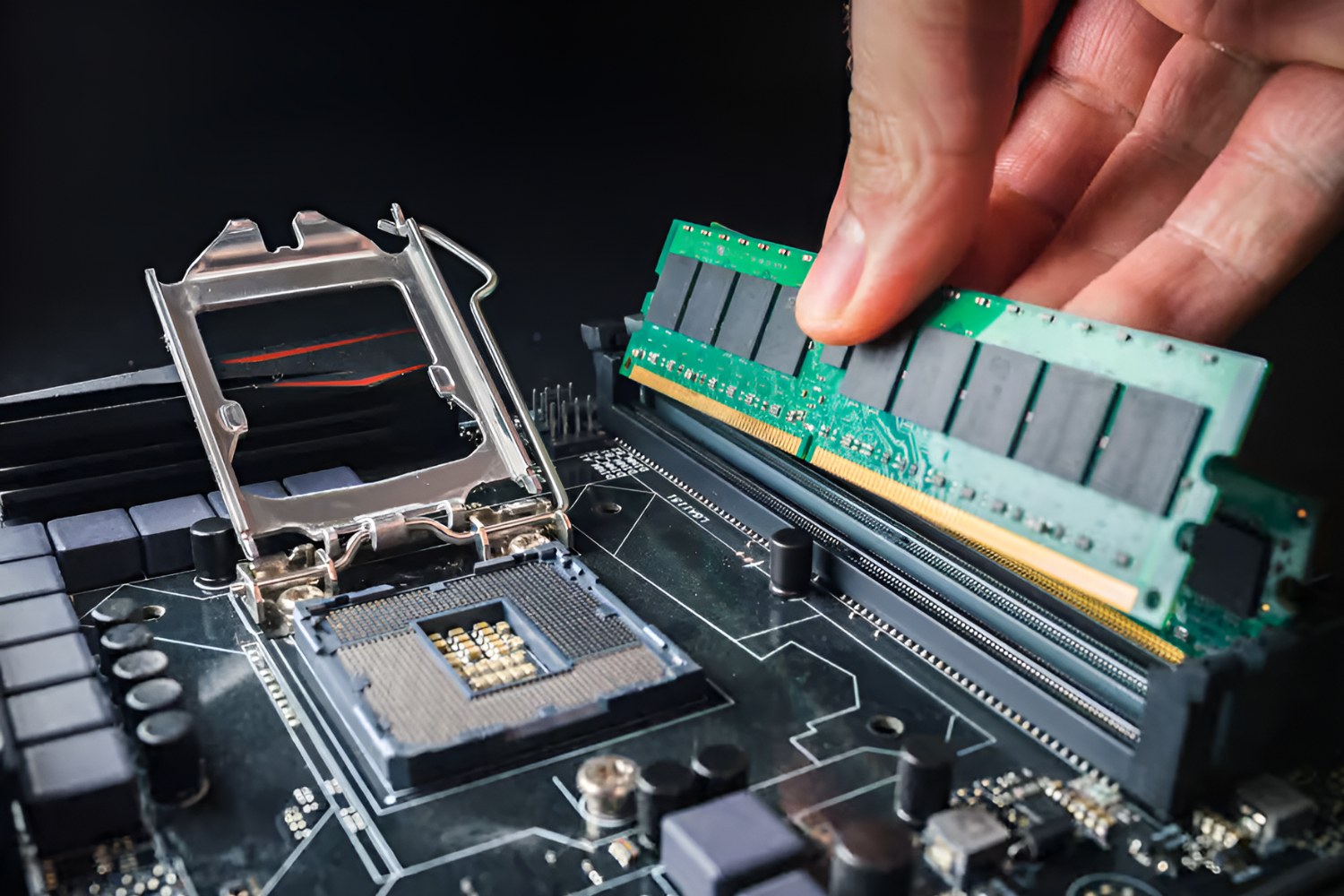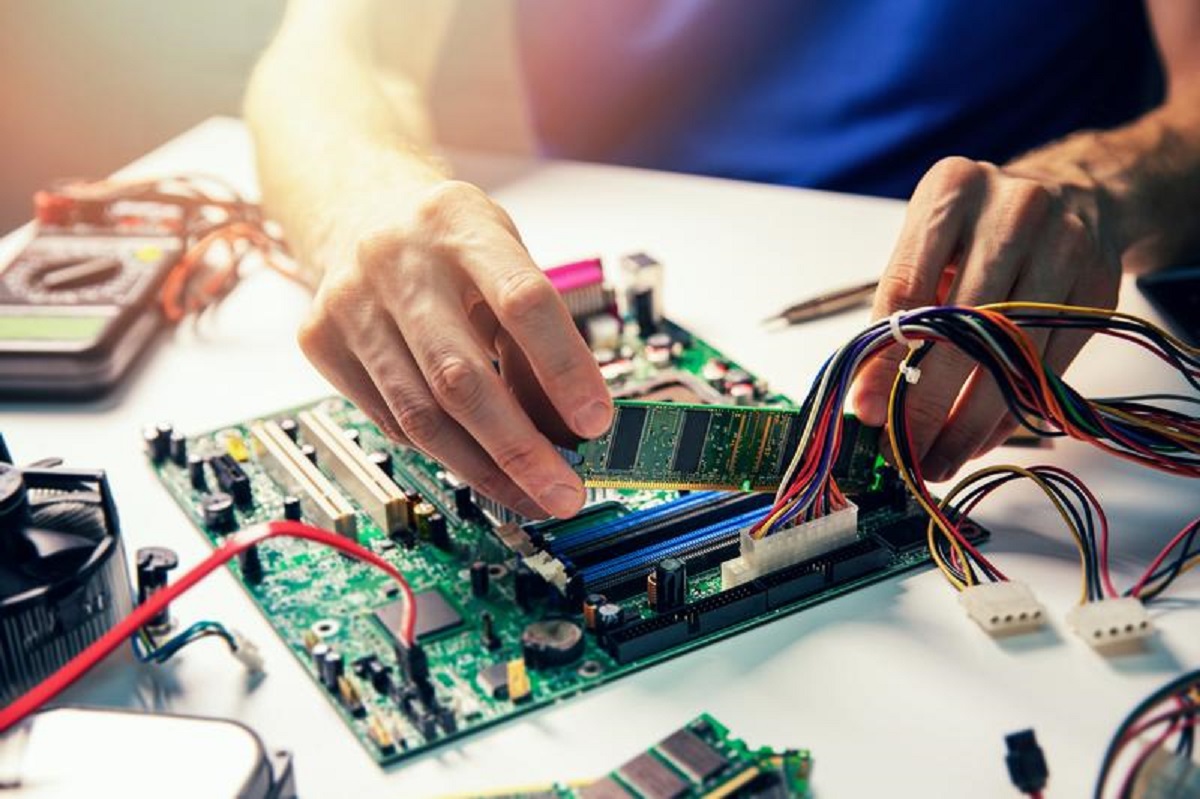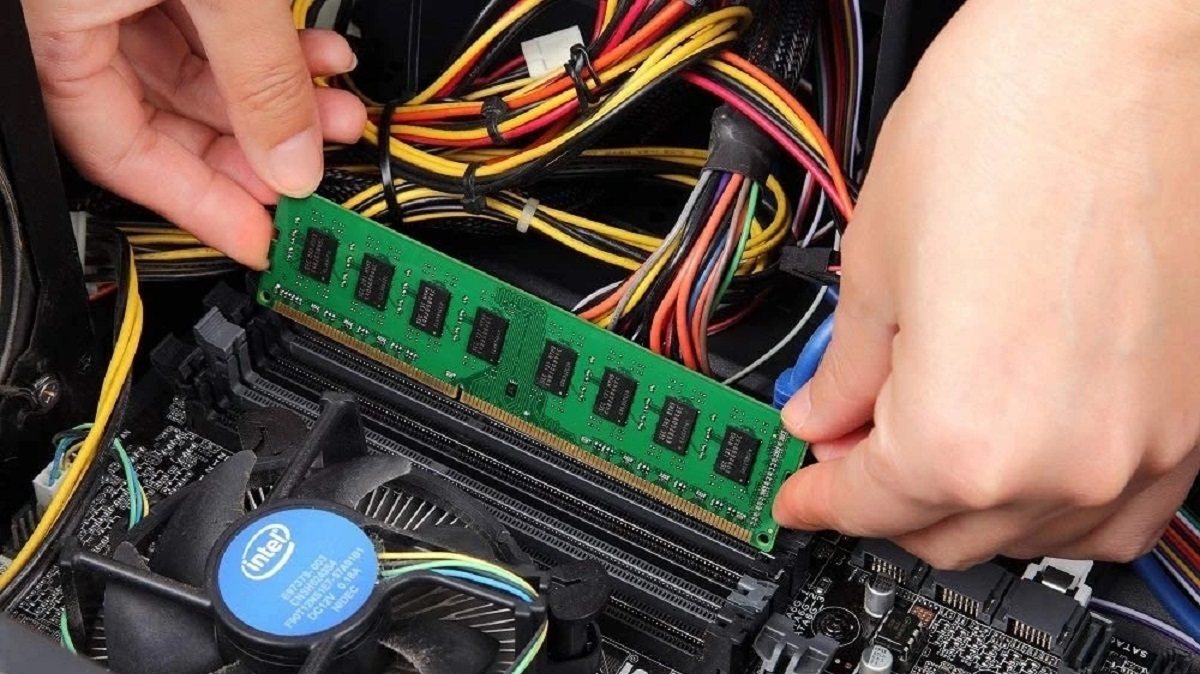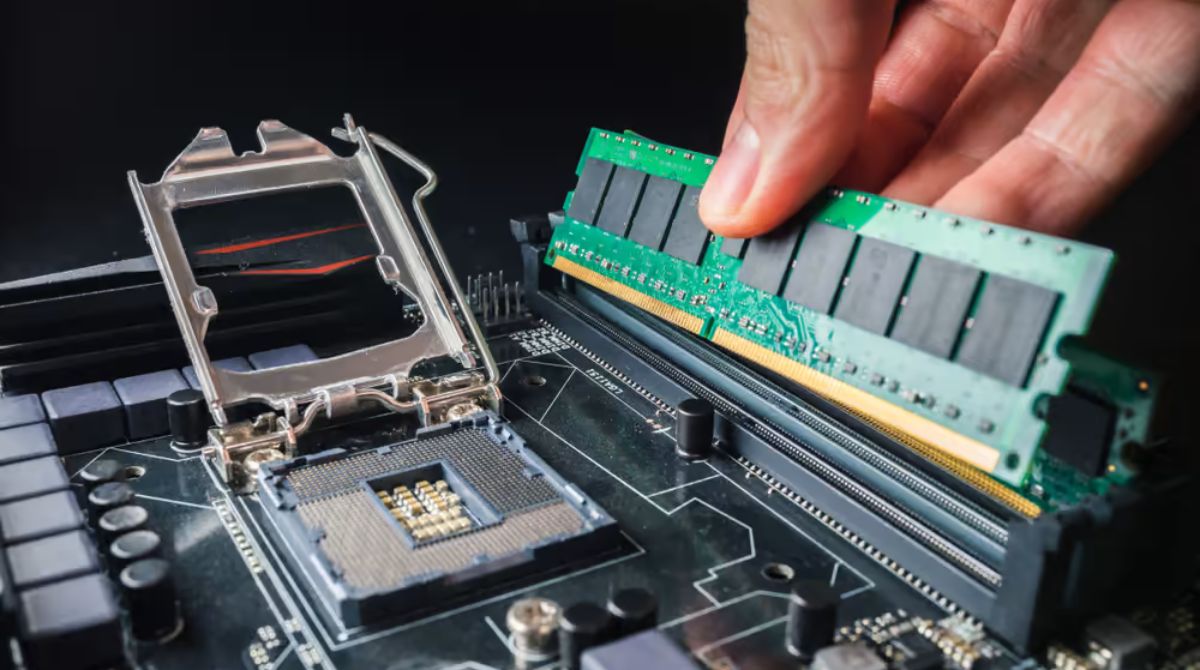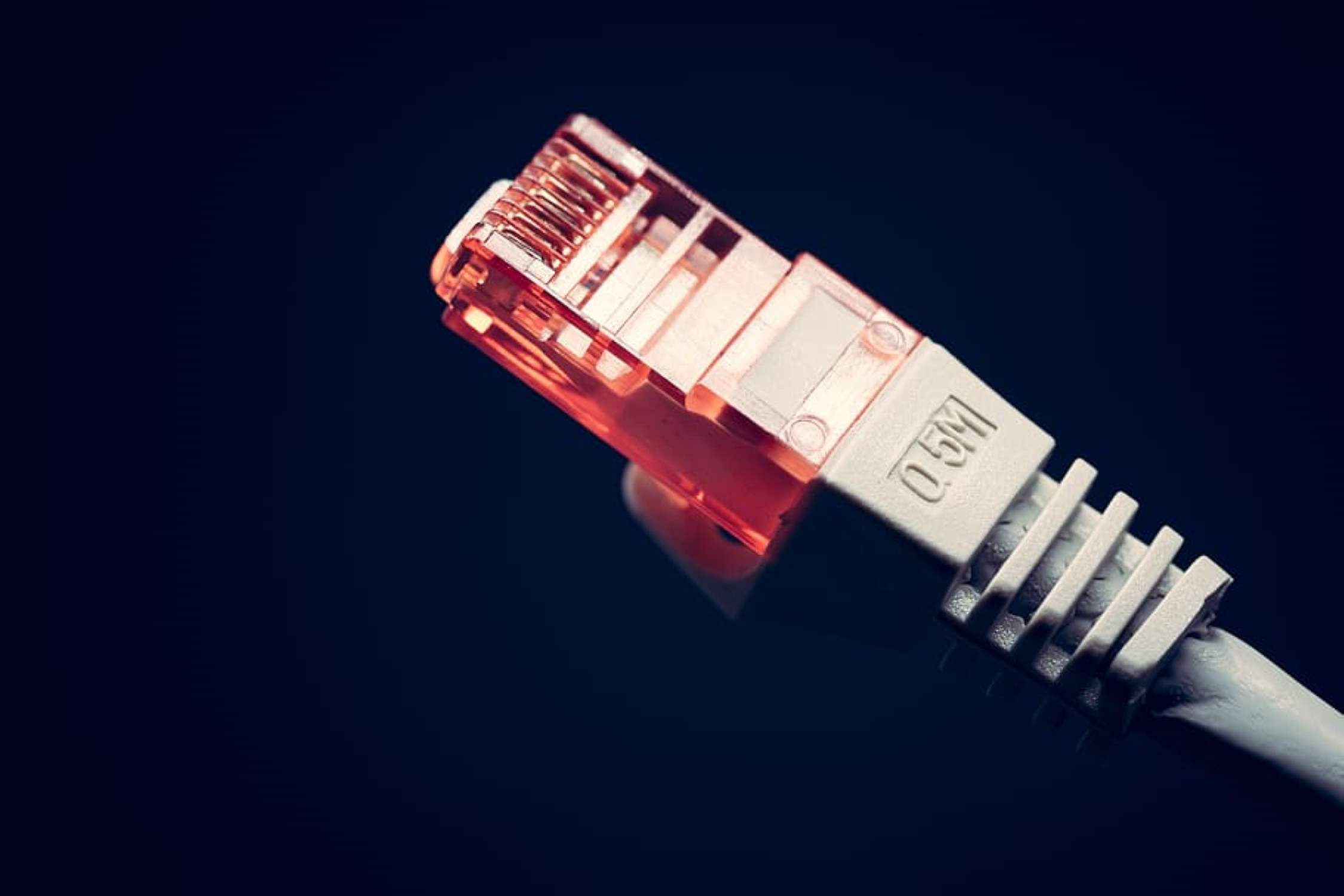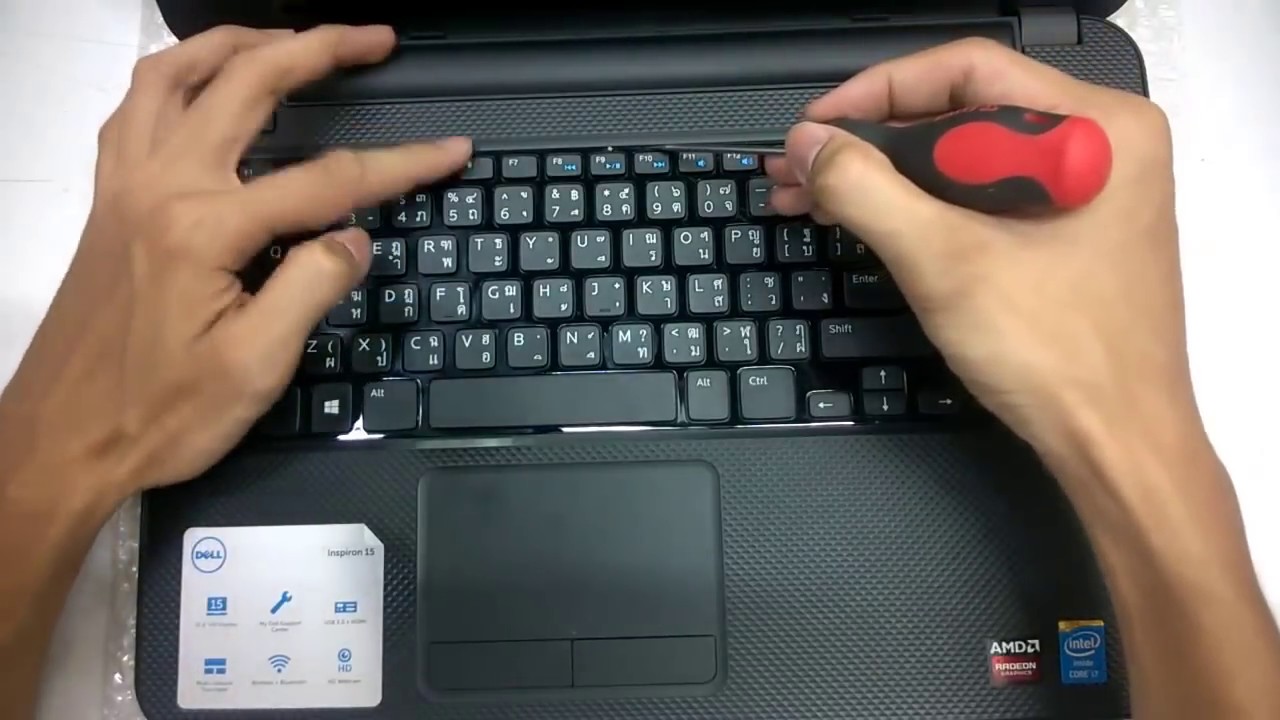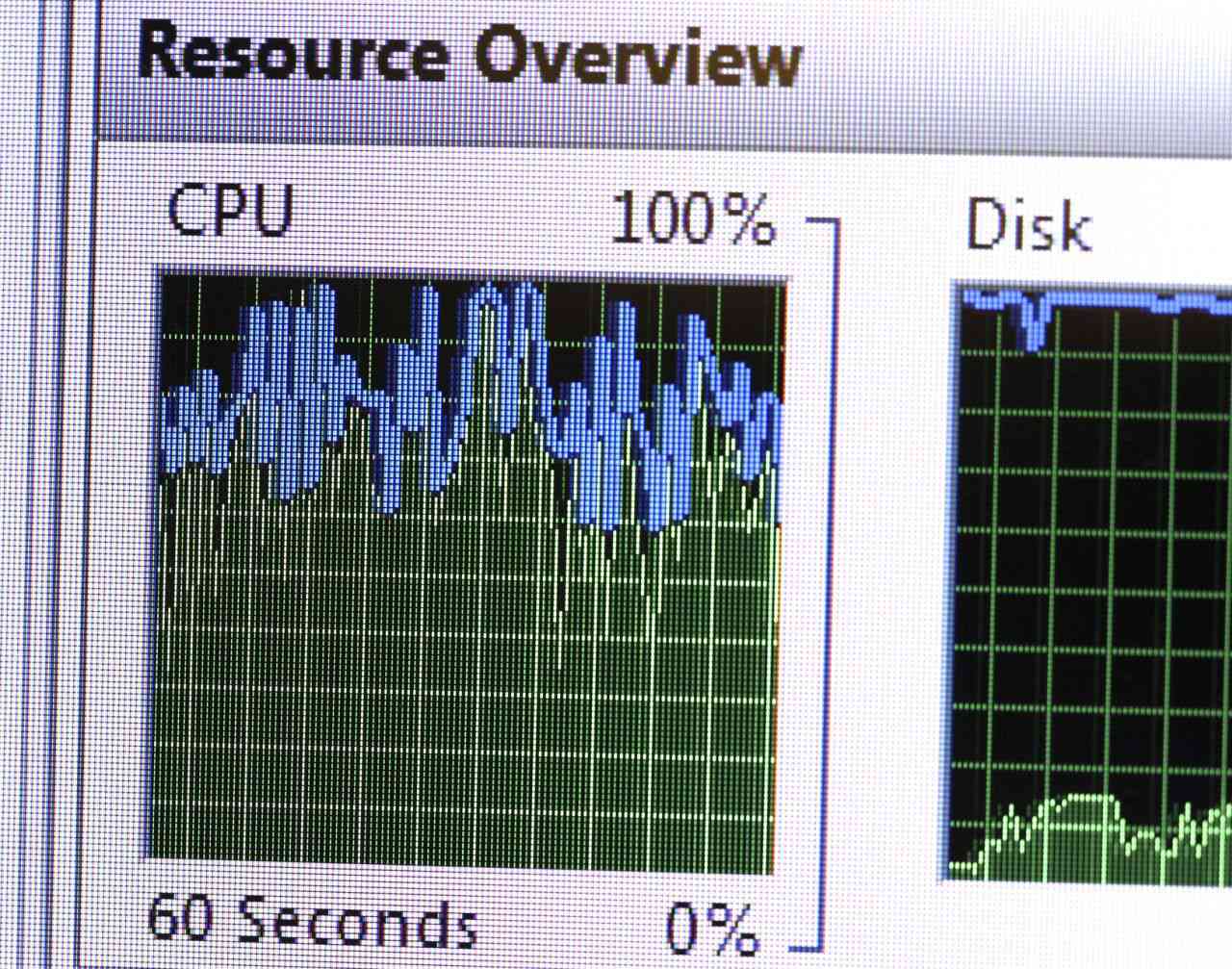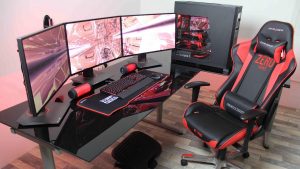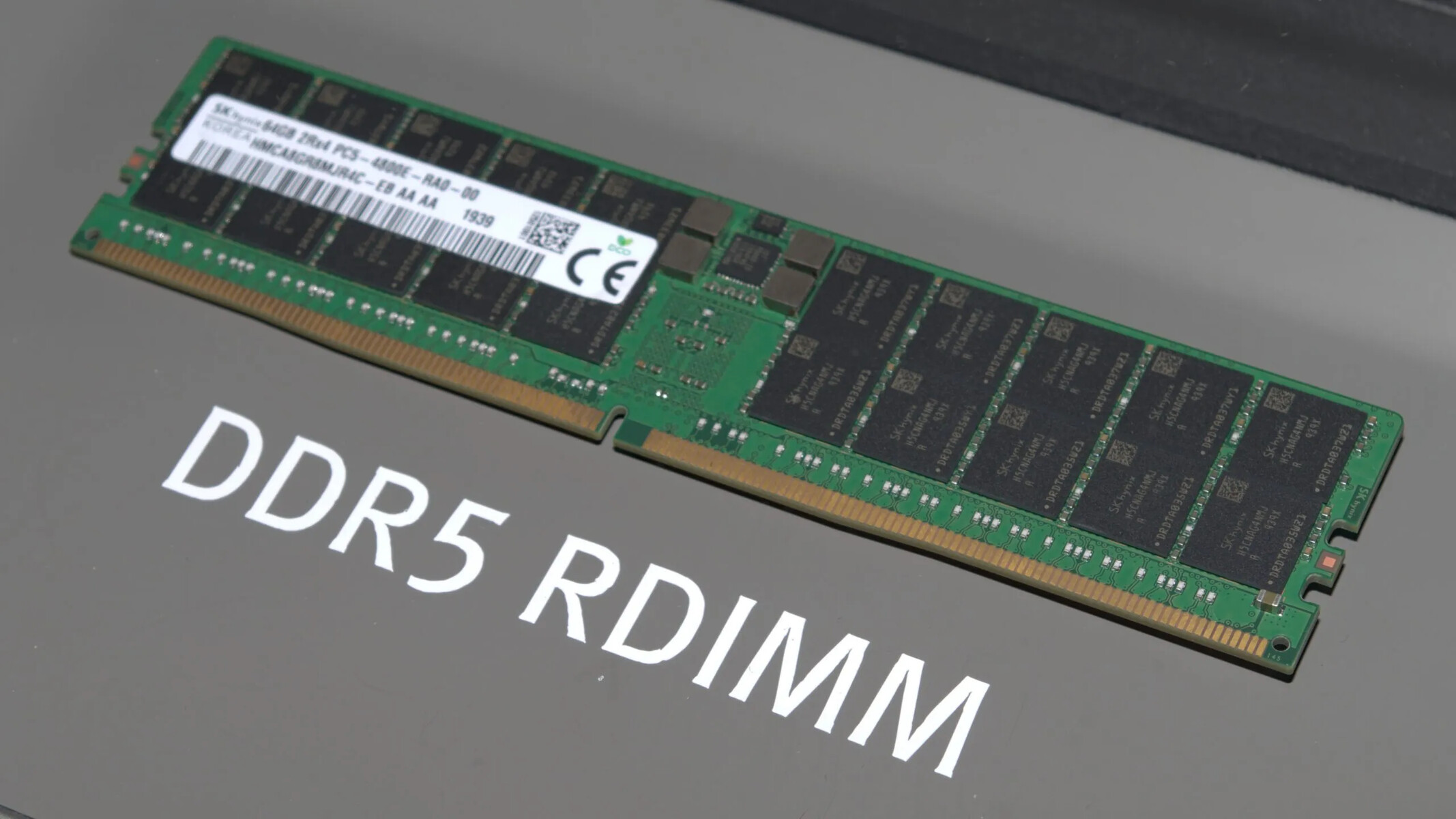Introduction
Have you ever wondered why your computer is only utilizing half of its RAM? It can be frustrating to see your device not performing at its full potential, especially if you rely on it for resource-intensive tasks like gaming or video editing. Understanding why this issue occurs and how to resolve it can help you optimize your computer’s performance and make the most out of your hardware.
RAM, short for Random Access Memory, is an essential component of your computer’s hardware. It acts as a temporary storage space for the data your computer needs to access quickly. Think of it as your computer’s short-term memory, allowing for faster and more efficient operations.
When you have more RAM, your computer can handle multiple tasks simultaneously and store larger amounts of data in its active memory, resulting in smoother performance and faster load times. However, if your computer is only using half or a portion of its installed RAM, it can significantly impact its speed and overall responsiveness.
There can be several reasons behind this issue, ranging from hardware limitations to software-related factors. In this article, we will explore the common causes of why your computer is only using half its RAM and provide practical solutions to fix the problem.
Before we dive into the potential causes, it’s worth noting that the methods to resolve this issue may vary depending on your specific computer model and operating system. However, the general principles discussed here should apply to most scenarios.
Understanding RAM
Before we delve into the reasons why your computer may only be using half its RAM, let’s first gain a better understanding of what RAM is and how it functions.
RAM, or Random Access Memory, is a type of computer memory that serves as a temporary storage space for data that the computer needs to access quickly. Unlike the hard drive, which stores data for long-term use, RAM provides fast and temporary access to data that the computer is actively using.
Think of RAM as your computer’s working memory—the place where it stores and retrieves information while it’s running. When you open a program or file, it gets loaded into RAM, allowing the computer to access it quickly. The more RAM your computer has, the more data it can hold in its active memory, which helps improve overall performance and multitasking capabilities.
RAM operates at a significantly faster speed than a hard drive or solid-state drive (SSD), making it ideal for storing data that needs to be quickly accessible by the computer’s processor. Additionally, RAM is volatile, meaning that its contents are erased when the computer is powered off or restarted.
The size of your computer’s RAM determines how much data it can store and access at any given time. RAM is typically measured in gigabytes (GB), with common sizes ranging from 4GB to 32GB or more. Higher RAM capacities are beneficial for running memory-intensive applications, such as video editing software or virtual machines.
When your computer is running low on RAM, it may resort to using virtual memory, which involves utilizing a portion of the hard drive as an extension of physical RAM. However, accessing data from virtual memory is much slower than accessing it directly from RAM, leading to a decrease in performance.
Now that we have a basic understanding of what RAM is and how it functions, let’s explore some of the common reasons why your computer may only be utilizing half of its installed RAM and what you can do to address the issue.
Common Reasons Why Your Computer Only Uses Half Its RAM
If you find that your computer is only utilizing half of its installed RAM, there can be several underlying causes. Let’s explore some of the most common reasons why this issue may occur:
- Hardware Limitations: Some older computer models or budget laptops may have a physical limitation on the amount of RAM they can support. Check your computer’s documentation or specifications to ensure that it is capable of utilizing the full amount of RAM installed.
- Software Limitations: Certain operating systems, such as the 32-bit version of Windows, have limitations on the amount of RAM they can efficiently utilize. If you are running a 32-bit operating system, it may only recognize and utilize a portion of the installed RAM. Consider switching to a 64-bit operating system to take full advantage of your computer’s RAM capacity.
- Incompatible RAM Modules: Mixing and matching different types or speeds of RAM modules can lead to compatibility issues. Ensure that the RAM modules you have installed are compatible with each other and with your computer’s motherboard. Incompatible RAM modules may cause the computer to recognize and utilize only a portion of the installed memory.
- Improper RAM Installation: If the RAM modules are not installed correctly, it can result in the computer not recognizing or utilizing the full capacity of the installed RAM. Make sure that the RAM modules are firmly seated in their slots and properly aligned.
- Outdated BIOS or Drivers: An outdated BIOS (Basic Input/Output System) or drivers can sometimes cause compatibility issues with RAM. Check for any available updates for your computer’s BIOS and drivers from the manufacturer’s website. Updating these components may resolve the issue.
- Resource-Intensive Programs: Some resource-intensive programs, such as video editing software or games, may only utilize a portion of the available RAM, regardless of its capacity. This is because these programs are designed to optimize performance by managing system resources efficiently. Check the program’s settings to ensure that it is configured to utilize more RAM if desired.
- RAM Reserved for Hardware: In certain cases, your computer’s RAM may be allocated and reserved for hardware components such as integrated graphics or network cards. This reserved RAM reduces the available system memory. Check your computer’s BIOS settings to see if there are any options for adjusting the amount of RAM allocated to hardware.
- Memory Leak: A memory leak occurs when a program or process fails to release RAM that it no longer needs. Over time, this can lead to a gradual reduction in available memory. Restarting the computer can temporarily free up the unused RAM. Additionally, identifying and addressing the specific program causing the memory leak is necessary for a permanent solution.
Understanding these common reasons can help you narrow down the cause of your computer only using half its RAM. In the next section, we will explore how to fix this issue and optimize your computer’s RAM usage.
Hardware Limitations
One possible reason why your computer is only utilizing half its RAM is due to hardware limitations. This can occur in older computer models or budget laptops that have a physical limitation on the amount of RAM they can support.
First, check your computer’s documentation or specifications to determine the maximum amount of RAM it can accommodate. If you have already installed the maximum supported RAM and your computer is only utilizing half of it, it is likely that your hardware is restricting the usage.
In some cases, certain computer models may have a limitation on the number of RAM slots available. For example, if your computer has two RAM slots, it may only be able to utilize half the installed RAM if only one slot is occupied.
To resolve this limitation, you can consider upgrading your computer’s hardware, such as the motherboard or the entire system. Before doing so, it is essential to consult an expert or refer to your computer’s manufacturer to ensure compatibility and feasibility.
Additionally, if your computer is not utilizing the full capacity of a single RAM module even though it is supported by the hardware, it could indicate a faulty RAM slot. In this case, try inserting the RAM module into a different slot to see if it resolves the issue. If not, it may require professional assistance to diagnose and fix the hardware problem.
Remember, hardware limitations are not always within your control. If your computer’s hardware restricts the usage of RAM, the best course of action may be to consider upgrading to a newer model or investing in a computer with higher RAM capacity.
Now that we have explored the potential hardware limitations causing your computer to use only half its RAM, let’s continue to the next section, where we will discuss software limitations as another possible cause.
Software Limitations
Another common reason why your computer may only be using half its RAM is due to software limitations. This can occur when running a 32-bit operating system, which has a cap on the amount of RAM it can efficiently utilize.
32-bit operating systems have a maximum addressable memory of 4 GB. This means that even if you have more than 4 GB of RAM installed, the operating system will only utilize a portion of it. This limitation stems from the way memory addressing works in 32-bit systems.
To take full advantage of your computer’s RAM capacity, consider upgrading to a 64-bit operating system. Unlike the 32-bit version, 64-bit operating systems can access and utilize significantly more RAM, allowing your computer to make full use of the installed memory.
Before proceeding with an operating system upgrade, it’s important to verify that your computer’s hardware is compatible with a 64-bit system. Check the manufacturer’s specifications or consult an expert to ensure compatibility.
In addition to the operating system, some software applications may also have limitations on the amount of RAM they can utilize. This is particularly true for older software or certain specialized applications.
If you frequently use memory-intensive software, such as video editing or virtual machine software, check the application’s settings to see if there are any options to allocate more RAM. Some applications may have settings to control the memory allocation, allowing you to increase the amount of RAM they can utilize.
Furthermore, make sure that all your software, including the operating system and applications, is up to date. Software updates often include bug fixes and performance improvements that can optimize RAM usage.
By addressing software limitations and ensuring that your operating system and applications are compatible with your computer’s hardware, you can maximize the utilization of your RAM and enhance your computer’s overall performance.
Now that we have explored the potential software limitations causing your computer to use only half its RAM, let’s move on to the next section, where we will discuss incompatible RAM modules as another possible cause.
Incompatible RAM Modules
Incompatible RAM modules can be another reason why your computer is only using half its installed RAM. Mixing and matching different types or speeds of RAM modules can lead to compatibility issues.
When installing RAM modules, it is important to ensure that they are compatible with each other and with your computer’s motherboard. Incompatible RAM modules may cause the computer to recognize and utilize only a portion of the installed memory.
To check if your RAM modules are compatible, refer to your computer’s documentation or the manufacturer’s website for a list of supported RAM specifications. Pay attention to factors such as the RAM type (DDR3, DDR4, etc.), capacity, speed, and voltage requirements.
It is generally recommended to use identical RAM modules for optimal compatibility and performance. This means using RAM modules from the same manufacturer, same model, and same specifications. If you need to add more RAM to your computer, consider purchasing additional modules of the same type and specifications as the existing ones.
If you have already installed incompatible RAM modules, you may need to remove or replace them with compatible ones. It’s important to power off your computer, unplug it from the power source, and follow proper handling procedures when working with RAM modules.
If you are unsure whether your RAM modules are compatible or if you are experiencing issues with incompatible RAM, you can consult a computer technician or contact the manufacturer’s support for guidance. They can help you determine the compatibility of your RAM modules and provide appropriate solutions.
Ensuring that your RAM modules are compatible and properly installed will help your computer fully utilize its installed memory, allowing for improved performance and multitasking capabilities.
Now that we have discussed incompatible RAM modules as a potential cause for your computer utilizing only half its RAM, let’s move on to the next section where we will explore improper RAM installation as another possible reason.
Improper RAM Installation
Improper RAM installation can cause your computer to only use half its installed RAM. If the RAM modules are not installed correctly, it can result in the computer not recognizing or utilizing the full capacity of the installed RAM.
When installing RAM, it is important to follow the proper procedure and ensure that the modules are securely seated in their slots. Here are some common mistakes to avoid during RAM installation:
- Not inserting the RAM module fully: Ensure that the RAM module is inserted fully into the slot until the latches on each side click into place. A partially inserted RAM module may not make proper contact with the motherboard and can lead to detection or utilization issues.
- Installing RAM in the wrong slots: Most motherboards have multiple RAM slots, and they often require specific configurations for optimal performance. Consult the motherboard’s manual to identify the recommended slots for installing RAM. Installing RAM in the wrong slots or not following the recommended configuration can lead to decreased RAM utilization.
- Mixing different types or speeds of RAM modules: Mixing different types or speeds of RAM modules can cause compatibility issues, resulting in reduced utilization of installed memory. It is best to use identical RAM modules for optimal compatibility and performance.
- Improper alignment: Ensure that the notch on the RAM module aligns with the groove in the RAM slot before inserting it. Inserting the module at an incorrect angle or not aligning it properly can prevent it from seating correctly in the slot.
If you suspect that the RAM installation may be the cause of the issue, follow these steps to troubleshoot:
- Power off your computer and unplug it from the power source.
- Carefully remove and reinsert the RAM modules, ensuring they are fully seated and aligned correctly.
- Double-check that the RAM modules are compatible with your computer’s specifications.
- Power on your computer and check if the RAM is now being recognized and utilized correctly. You can check this information in the operating system’s system information or task manager.
If reseating the RAM modules does not resolve the issue, it is recommended to seek professional assistance or consult the manufacturer’s support for further guidance.
By ensuring proper RAM installation, you can eliminate potential issues that may be prohibiting your computer from using the full capacity of its installed RAM.
Next, we will explore another possible reason for your computer only using half its RAM: outdated BIOS or drivers.
Outdated BIOS or Drivers
An outdated BIOS (Basic Input/Output System) or drivers can contribute to your computer only using half its installed RAM. The BIOS is responsible for initializing hardware components, including the RAM modules, during the boot process. Drivers, on the other hand, allow the operating system to communicate with various hardware components, including RAM.
If your computer has an outdated BIOS version, it may not properly detect or support the full capacity of the installed RAM modules. Similarly, outdated or incompatible drivers can hinder the correct functioning and utilization of RAM.
To address this issue, you should visit the manufacturer’s website of your computer or motherboard to check for any available BIOS updates. These updates often include bug fixes, performance improvements, and enhanced compatibility with newer hardware, such as RAM modules. Follow the instructions provided by the manufacturer to install the BIOS update properly.
For drivers, it is advisable to keep them up to date to ensure optimal performance and compatibility. You can manually update drivers by visiting the manufacturer’s website and downloading the latest versions for your specific hardware components, including the motherboard chipset and RAM-related drivers. Alternatively, you can use driver update software that can scan your system and automatically update the drivers for you.
Make sure to restart your computer after installing the BIOS update or updating drivers to ensure that the changes take effect appropriately.
By updating the BIOS and drivers to their latest versions, you ensure that your system is equipped with the necessary software enhancements to recognize and utilize the full capacity of the installed RAM modules.
Now that we have discussed the potential impact of outdated BIOS or drivers on your computer’s RAM usage, let’s move on to the next section where we will explore resource-intensive programs as another possible cause.
Resource-Intensive Programs
Resource-intensive programs can also contribute to your computer only utilizing half its installed RAM. These programs, such as video editing software, gaming applications, or virtual machines, are designed to optimize performance by managing system resources efficiently.
When resource-intensive programs run, they allocate and utilize RAM based on their specific requirements. In some cases, these programs may only utilize a portion of the available RAM, regardless of its capacity. This behavior is intentional to prevent excessive memory usage and potential system instability.
If you have a significant amount of RAM installed, it is possible that these programs are not utilizing the full capacity due to their default settings or configuration. To address this issue, check the settings of the resource-intensive programs you frequently use. Look for options to allocate more RAM or adjust the memory usage limits within the program’s preferences or settings menu.
Keep in mind that allocating excessive RAM to these programs may not always result in better performance. It is essential to strike the right balance and avoid allocating more RAM than necessary to ensure optimal system performance.
In addition to adjusting program settings, keeping your applications up to date is crucial. Software updates often include performance improvements and bug fixes that can optimize RAM usage and overall system stability.
If you suspect that a specific resource-intensive program is causing excessive RAM usage or not utilizing RAM properly, you may want to consider investigating further. There could be underlying issues within the software, such as memory leaks or compatibility problems. In such cases, contacting the software’s support team or seeking assistance from online forums can help you troubleshoot and resolve the issue.
By exploring the settings of resource-intensive programs and ensuring that they are up to date, you can better manage the RAM utilization and enhance the overall performance of your computer.
Next, we will discuss another potential cause for your computer only using half its RAM: RAM reserved for hardware.
RAM Reserved for Hardware
In certain cases, a portion of your computer’s RAM may be allocated and reserved for specific hardware components. This reserved RAM reduces the available system memory, resulting in your computer only utilizing half its installed RAM.
The hardware components that commonly reserve a portion of RAM include integrated graphics, network cards, and other peripherals. These components may require a certain amount of memory to function efficiently.
To determine if RAM is reserved for hardware, you can check your computer’s BIOS settings. Access the BIOS by restarting your computer and pressing a specific key during the boot process (usually displayed on the screen). Once in the BIOS, navigate to the memory settings or advanced options section to see if there is an option to adjust the amount of RAM allocated to hardware.
Keep in mind that adjusting the RAM allocation for hardware components may impact their performance. If you reduce the RAM allocated to integrated graphics, for example, it may result in reduced graphics performance. Ensure that you are familiar with the implications before making any changes in the BIOS.
If there are no options in the BIOS to adjust RAM allocation for hardware, it means that the hardware components are permanently reserved and unable to be modified. In such cases, your computer’s operating system will recognize and report the available amount of RAM accordingly.
Although you may not be able to reclaim the reserved RAM for other uses, it is important to understand the reason behind the reduced available RAM. This knowledge can help you make informed decisions regarding future hardware upgrades or optimizing your system’s performance.
Now that we have explored the potential RAM reservation for hardware as a cause for your computer only using half its RAM, let’s move on to the next section where we will discuss memory leaks.
Memory Leak
A memory leak is a software issue that can cause your computer to only utilize half its installed RAM. It occurs when a program or process fails to release RAM that it no longer needs, gradually consuming available memory over time.
When a memory leak occurs, the affected program continuously allocates memory without freeing it up, resulting in a gradual reduction in available RAM. This can cause your computer to become sluggish, unresponsive, or even crash if the available RAM is completely depleted.
Memory leaks can be caused by poorly coded software, programming errors, or even compatibility issues between different programs or drivers. They are more common in older or poorly maintained software applications.
Identifying the specific program or process causing the memory leak can be challenging. One way to identify a memory leak is to monitor your computer’s RAM usage over time. If you notice a gradual increase in RAM consumption even when no programs are actively running, it may indicate a memory leak.
To address memory leaks, follow these steps:
- Restart your computer: Restarting your computer can temporarily free up the unused RAM, as it clears the memory used by all programs and processes. This can provide a temporary solution to alleviate the effects of a memory leak.
- Update Software: Check for software updates for the affected program. Often, developers release patches and updates that fix memory leak issues and improve overall performance.
- Close Unused Programs: Close any unnecessary programs or processes running in the background that could be contributing to excess memory usage.
- Monitor and Identify the Problematic Program: Use system-monitoring tools or task manager utilities to observe the memory usage of individual programs. Look for any program that consistently exhibits high memory usage or shows a significant increase in usage over time.
- Contact Support: If you have identified a specific program responsible for the memory leak, contact the software’s support team. They can provide guidance, offer updates, or suggest workarounds to mitigate the memory leak issue.
Resolving a memory leak may require the assistance of the software developer or IT professional if the issue persists. They can help identify the root cause of the memory leak and provide appropriate solutions.
By addressing memory leaks, you can ensure that your computer’s RAM is utilized efficiently, leading to improved system performance and stability.
Now that we have discussed memory leaks as a possible cause for your computer only using half its RAM, let’s move on to the next section where we will explore how to fix this issue.
How to Fix the Issue
Now that we have explored the various potential causes of your computer only utilizing half its installed RAM, let’s discuss how to fix this issue. Here are some steps you can take to address the problem:
- Check Hardware Compatibility: Ensure that your computer’s hardware is compatible with the RAM modules you have installed. Refer to your computer’s documentation or the manufacturer’s website to verify compatibility.
- Update BIOS and Drivers: Check for any available updates for your computer’s BIOS and drivers. Outdated BIOS or drivers can cause compatibility issues and hinder proper RAM utilization. Update them according to the manufacturer’s instructions.
- Verify RAM Installation: Make sure that the RAM modules are properly installed, aligned, and fully seated in their slots. Incorrect installation can prevent the computer from recognizing or utilizing the full capacity of the installed RAM.
- Upgrade to a 64-bit Operating System: If you are currently using a 32-bit operating system, consider upgrading to a 64-bit version. 32-bit systems have limitations on RAM utilization, and upgrading to a 64-bit system allows for optimal utilization of installed RAM.
- Check for Incompatible RAM Modules: Ensure that the RAM modules you have installed are compatible with each other and with your computer’s motherboard. Mixing incompatible RAM modules can lead to utilization issues. Consider using identical RAM modules for optimal compatibility.
- Adjust Resource-Intensive Program Settings: Review the settings of resource-intensive programs and allocate more RAM if necessary. Some programs have options to adjust memory usage, allowing for better utilization of available RAM.
- Verify RAM Reservation for Hardware: Check the BIOS settings to see if any RAM is reserved for hardware components. Adjust the allocation if possible, keeping in mind the impact it may have on the performance of these components.
- Address Memory Leaks: If you suspect a memory leak, monitor your computer’s RAM usage and identify the problematic program. Restart your computer, update the software, and contact the software’s support team for further assistance in resolving the memory leak.
Remember that the specific steps to fix the issue may vary depending on your computer’s model and operating system. It is recommended to refer to the manufacturer’s documentation or seek professional assistance if needed.
By following these steps, you can address the issue of your computer only using half its installed RAM and improve the overall performance and efficiency of your system.
Now, let’s move on to the concluding section where we summarize the key points discussed in this article.
Conclusion
In conclusion, there are several common reasons why your computer may only be utilizing half its installed RAM. Hardware limitations, software limitations, incompatible RAM modules, improper RAM installation, outdated BIOS or drivers, resource-intensive programs, RAM reserved for hardware, and memory leaks can all contribute to this issue.
To fix the problem, you should ensure that your computer’s hardware is compatible with the installed RAM modules, update the BIOS and drivers to their latest versions, verify proper RAM installation, consider upgrading to a 64-bit operating system, check for incompatible RAM modules, adjust settings of resource-intensive programs, review RAM reservation for hardware, and address any memory leaks that may be occurring.
It’s important to note that tackling this issue may require a combination of troubleshooting steps and consulting with professionals or the support teams of specific hardware or software. The resolution can vary depending on the specific configuration and model of your computer.
By resolving the issue of your computer only using half its RAM, you can optimize system performance, enhance multitasking capabilities, and ensure that your hardware is utilized to its full potential.
We hope that this article has provided valuable insights and guidance to help you identify and address the causes behind your computer’s RAM utilization issue. Remember to consult reputable sources, follow proper procedures, and seek professional help if needed to ensure the best possible results.







